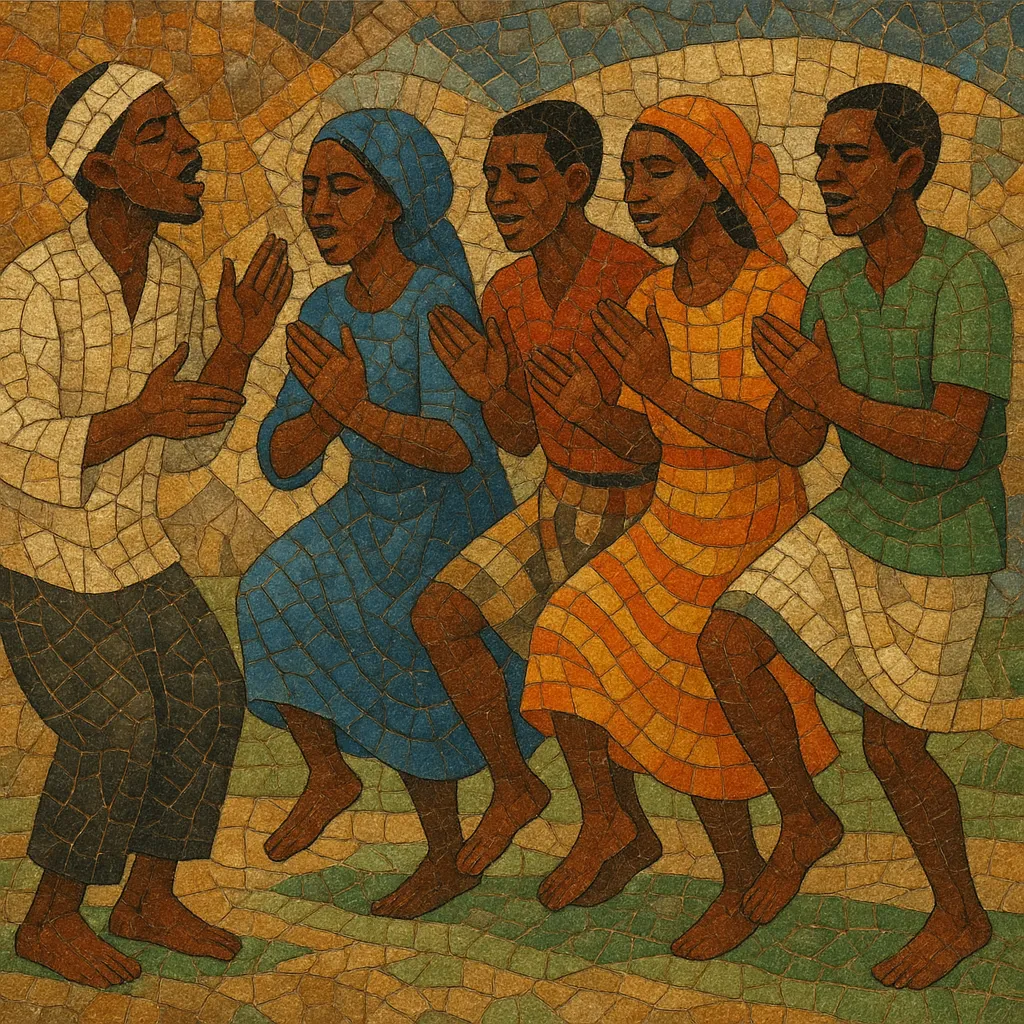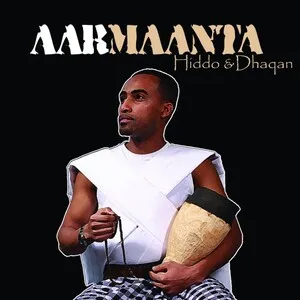Dhaanto is a fast, jubilant Somali folk song-and-dance tradition characterized by call-and-response vocals, driving handclaps, and synchronized line formations. Dancers move in tight unison—stepping, stomping, and pivoting—while the chorus answers a lead singer in short, memorable refrains.
Melodically, Dhaanto tends toward pentatonic-leaning tunes sung in a bright, open vocal timbre. Rhythmically it sits in quick duple meter with a propulsive backbeat made by clapping or small drums; modern arrangements often add keyboard, drum machine, and electric bass. Lyrically it celebrates pastoral life, love, pride, and heroism, reflecting Somali oral-poetic traditions and communal festivities.
Dhaanto emerged among Somali pastoral communities of the Haud/Ogaden plateau in the Horn of Africa in the early 20th century. It grew out of communal singing, work-organizing chants, and orally transmitted poetry, becoming a spirited form used for celebration, courtship, and social cohesion.
During the early 1900s, Dhaanto spread alongside itinerant poets and performers. Its antiphonal structure and stirring rhythm made it useful for rallying, messaging, and fostering solidarity. Urban migration later brought Dhaanto into town theaters and radio, where it began to be arranged for stage ensembles with kaban (oud), frame drums, and harmonium or early keyboards.
From the mid- to late 20th century, state troupes and regional ensembles codified Dhaanto stage choreography—line formations, arm swings, and synchronized stomps—while bands added electric instruments. Recordings and television popularized the form beyond its pastoral origins, and its catchy refrains became staples at weddings and public festivals.
In the 2000s–present, artists have blended Dhaanto’s rhythmic core with electronic beats and pop hooks, helping it circulate through Somali communities across East Africa, the Arabian Peninsula, Europe, and North America. Viral performance clips and live shows keep the dance central to communal identity, while lyrics continue to carry themes of love, pride, and homeland.



